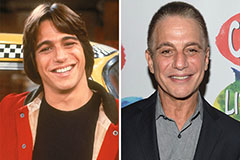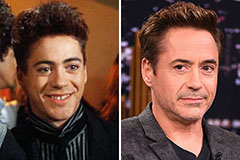The 8-Second Trick For Landscape Design
Table of ContentsLandscape Design for Dummies7 Easy Facts About Landscape Design DescribedLandscape Design for Dummies9 Simple Techniques For Landscape DesignThe 25-Second Trick For Landscape Design
A backyard can normally be separated right into three areas: public (the front lawn), private (the back backyard), and service (generally the side backyard). The location of activity areas depends primarily on the type of location, the size of area needed, the kind of task, and the wanted distance to various other activities and structures.The outdoors wall surface of the residence commonly functions as the first wall surface or starting factor of an outside area. Inappropriate usages need to be divided, and associated tasks, such as food preparation and dining, should be assembled to make the lawn much more effective and pleasurable. When utilizing hardscape to produce rooms, make use of building product similar to that used in your house for continuity from your house into the garden.
Connected spaces. Credit: Gail Hansen, UF/IFAS Making use of comparable hardscape attributes and repeating plants draws the eye around the garden.
What Does Landscape Design Do?

For emotional convenience plants are used as physical or implied barriers for privacy and safety. Physical barriers obstruct both the sight and accessibility to a room and consist of fences, walls and plant hedges.
Physical and implied obstacles. Credit Report: Gail Hansen, UF/IFAS For these factors, the kinds of plants to be used (such as trees, hedges, or groundcovers) need to be picked in the beginning of preparation (Landscape Design). Plant types are chosen for their useful capabilities to ensure that their future purpose and required area can be taken into consideration at the exact same time

The Best Strategy To Use For Landscape Design
Each plant mass is in front of, behind, or following to, one more mass. Number 11. Straight plant layers. Credit Scores: Gail Hansen, UF/IFAS Number 12. Vertical plant layers. Landscape Design. Credit Rating: Gail Hansen, UF/IFAS Duplicating plants within a mass and duplicating masses with similar plants links the garden together. The private plant characteristics have to be taken into consideration to efficiently layer and mass plants.
All plant structures start with the main structure plants, the large, mostly evergreen background plants-such as the trees and large hedges. These plants different or enframe spaces, manage the dimension of the space, and offer the beginning point for choosing the proper features of the 2nd layer, midground plants, for massing and infill.
Essential points in the yard need to be highlighted by the use special plants, unique frameworks, or garden ornaments. Noting limits or entrances to rooms can be made with gateways, arbors, and actions, or through the use of unique and vibrant plants. The form and/or style motif of the yard will certainly frequently help establish the essential points and exactly how they ought to be highlighted.
Various other essential locations in the lawn are prime focus, which is utilized to aesthetically arrange a landscaped location. The kind of focal factor frequently depends on the seeing point of view. Different perspectives or viewpoints can reveal different make-ups in the landscape that might call for a range of focal points. Contrasting texture, form, size and color will certainly catch and hold the eye.
Landscape Design for Dummies

Figure 13. Plant types. you can try this out Credit History: Gail Hansen, UF/IFAS After form, texture is the next leading attribute of a plant; crude, tool and fine appearances can be used for contrast and emphasis in the landscape. Type and structure both trump shade in the yard for most of the year. However, throughout specific periods, color will be one of the most noticeable characteristic of the garden.
The pleasant fragrance of plants, the noise of wind in the trees, the audio and texture of water, and the colors and appearances of sculptures, pots and garden furnishings all add to the experience of the garden. One information that is often forgotten is the impact of light on the aesthetics of the i loved this plants.

A Biased View of Landscape Design
It is necessary to recognize the eventual mature size of plants so they can be put in the right place and spaced correctly when they are mounted. Offering plants room to expand is a difficulty because the common fully grown dimension is generally based upon optimum expanding conditions and the ecological problems of a website might trigger a plant to expand bigger or remain smaller sized.
 Tony Danza Then & Now!
Tony Danza Then & Now! Alfonso Ribeiro Then & Now!
Alfonso Ribeiro Then & Now! Robert Downey Jr. Then & Now!
Robert Downey Jr. Then & Now! James Van Der Beek Then & Now!
James Van Der Beek Then & Now! Elin Nordegren Then & Now!
Elin Nordegren Then & Now!